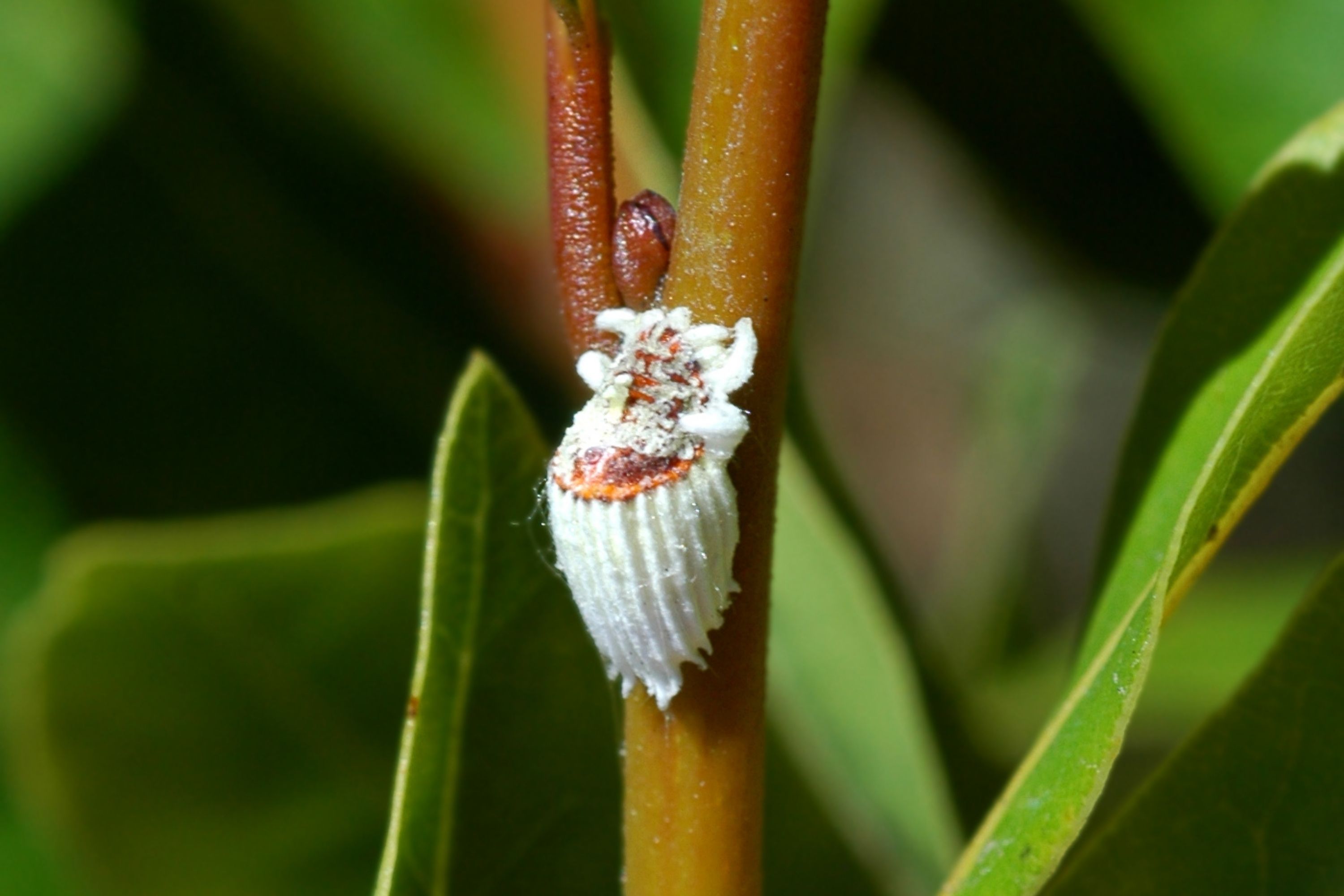Cottony cushion scale
(Icerya purchasi)

Description
Icerya purchasi (common name: cottony cushion scale) is a scale insect that feeds on more than 80 families of woody plants,most notably on Citrus and Pittosporum. Originally described in 1878 from specimens collected in New Zealand as pests of kangaroo acacia and named by W.M. Maskell "after the Rev. Dr. Purchas who, believe first found it". It is now found worldwide where citrus crops are grown. The cottony cushion scale originates from Australia. This scale infests twigs and branches. The mature hermaphrodite is oval in shape, reddish-brown with black hairs, 5 mm long. When mature, the insect remains stationary, attaches itself to the plant by waxy secretions, and produces a white egg sac in grooves, by extrusion, in the body which encases hundreds of red eggs. The egg sac will grow to be two to three times as long as the body. Newly hatched nymphs are the primary dispersal stage, with dispersion known to occur by wind and by crawling. Early stage nymphs feed from the midrib veins of leaves and small twigs, and do the bulk of the damage. At each molt, they leave at the old feeding point the former skin and the waxy secretions in which they had covered themselves and from which their common name is derived. Unlike many other scale insects, they retain legs and a limited mobility in all life stages. Older nymphs migrate to larger twigs and eventually as adults to branches and the trunk. Their life cycle is highly temperature-dependent, as the length of time in each stage of life is longer in cold temperatures than high temperatures. In addition to the direct damage from sap sucking, the insects also secrete honeydew, on which sooty mold often grows and causes further damage to the host plant. Some ants will also consume this honeydew. Males are rare in hermaphroditic species of Icerya. Males are haploid while females are diploid. Females have an ovitestis that is capable of producing both sperm and oocytes which fertilize internally to produce diploid offspring (females) through a form of hermaphroditism. The cells of the ovitestis are haploid and are derived from excess sperm during matings with males. This has been termed as 'parasitic tissue' and theoretical studies have examined this as a form of sexual conflict and have examined the possible fates and fitness consequences since females can produce daughters by mating with males or using their parasitic male cell lines.
Taxonomic tree:







